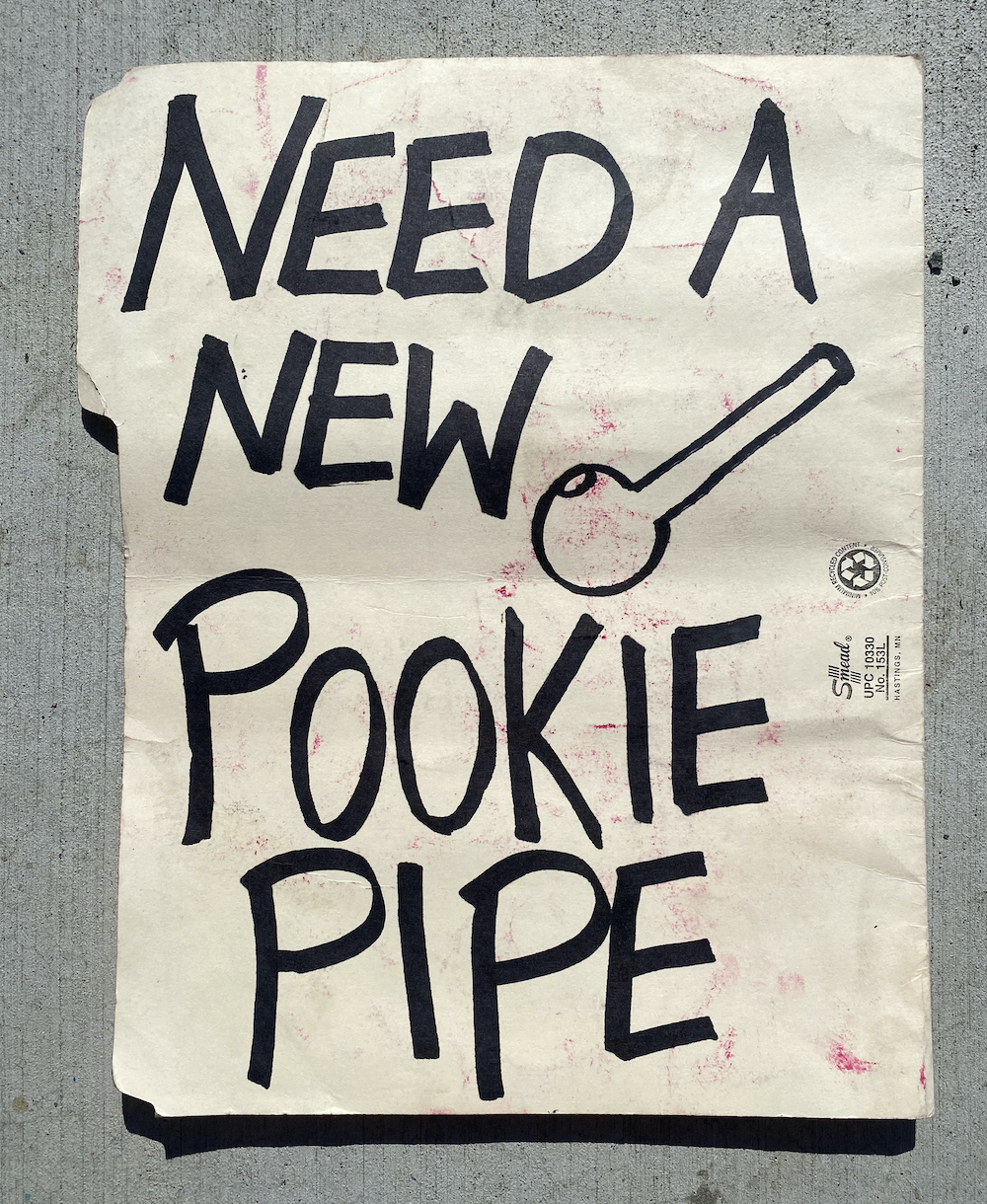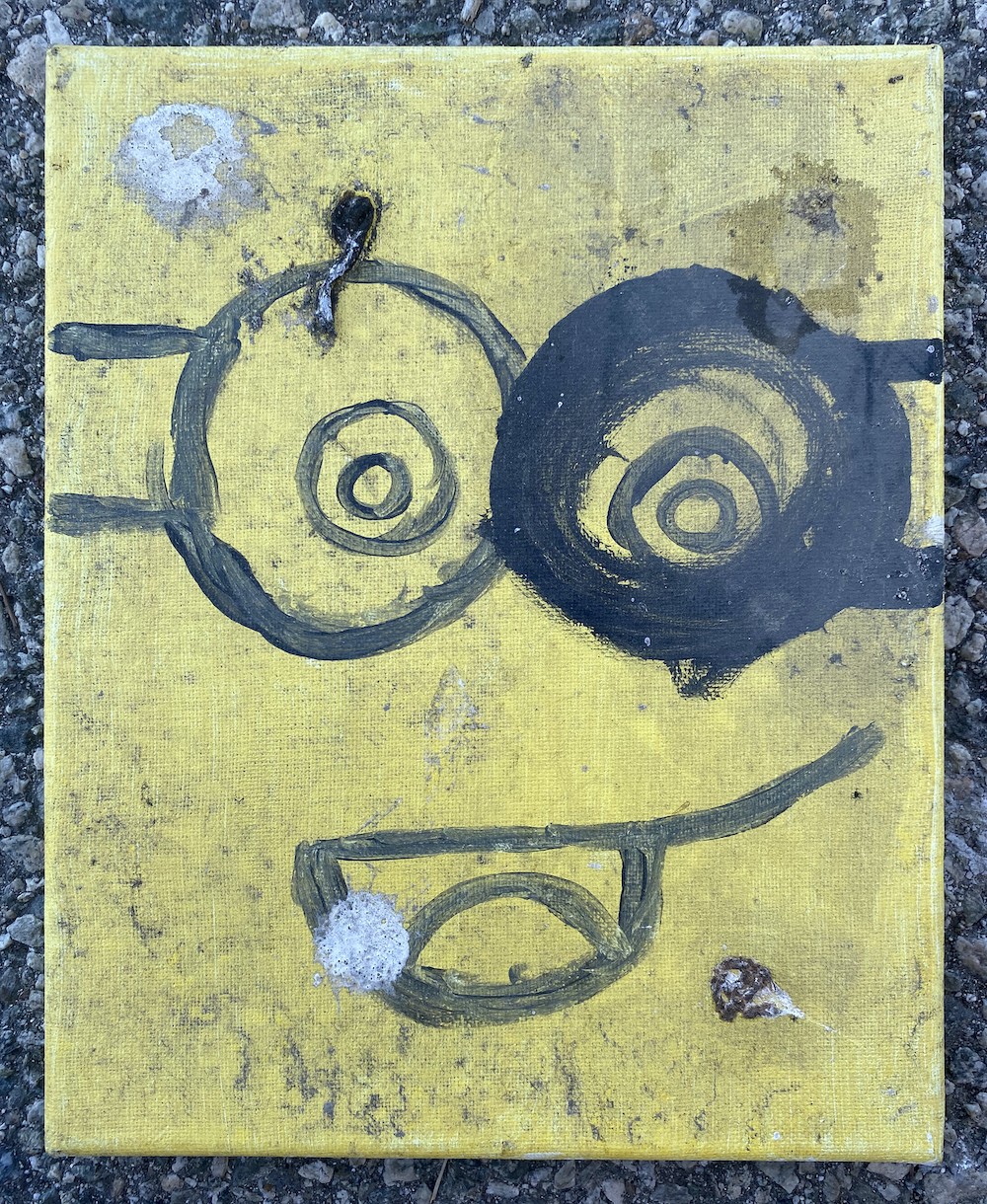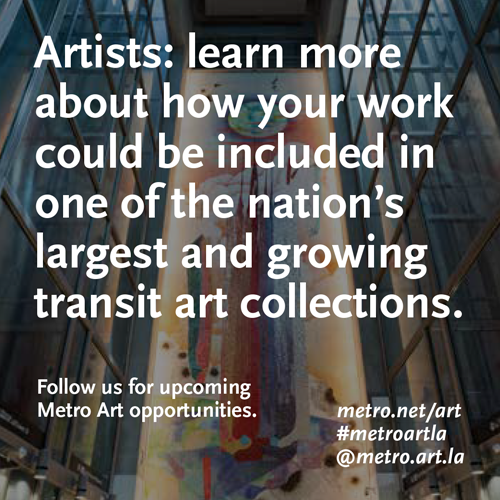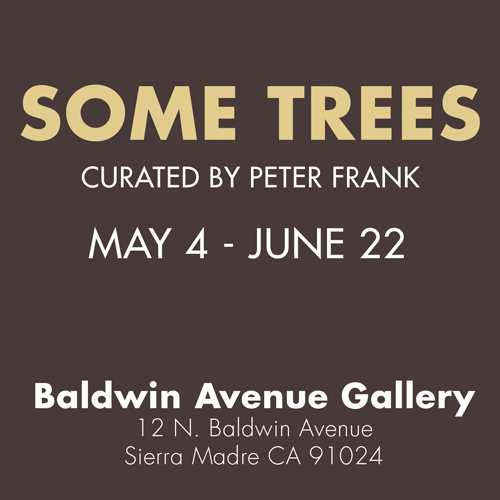Thrift stores are potentially the end of the line for any object on sale therein; after that, it’s either ref-use or reuse. Consequently, there’s a poignancy to the purchase of any artwork from a thrift store, whether by an ironic hipster being or a sincere abuelita. But despite prices that tend to be 99 cents and not 99,000 dollars, some art pieces seem destined to remain orphaned, which adds a certain noblesse oblige to their appreciation and collection by artists and cultural decoders like Jim Shaw, who first published his findings in the 1990 book Thrift Store Paintings. The book exults in artworks good enough to be for sale in legitimate galleries but too weird to be bought there, which explains the occasional discovery of a thrift store masterpiece “in the wild.” It’s an unfortunate paradox as thrift stores are considered as low as it gets, and collectors of Outsider Art prefer a more respectable provenance than Goodwill.

Anonymous, Untitled, Date Unknown.
This discretion may be warranted: most donations of naïve art to thrift stores are aesthetically and financially worthless. Even so, there is artwork whose repugnance and abysmal dollar value exclude it from even that group. Homeless Art is made to satisfy the primitive, often drug-induced, art urgings of nomadic people who may not describe themselves as artists. Many of their burgeoning number are more likely to be searching for a drug dealer than an art dealer. But for those with a different agenda, busking art on the avenues is a good source of income. R.A. Wood is a “houseless” artist “in downtown LA who makes cash with his custom calligraphic drawings of names. But on a different block of Spring Street, the homeless work for pedestrians’ baksheesh, most of them favoring honesty’s comedic value to openly advertise whatever they’re lacking. One step above panhandling, sales in this quaternary art market depend on sympathy and amusement more than skill and name recognition.
Still, many Homeless Art pieces are made without an audience in mind; as a result, they can represent a self-expression purer than anything on display in many galleries and museums. And even though Homeless Art can include genres approved by the “official” art world, there is a multitude of factors making any relationship between the two impossible. After all, promoting homeless artists is difficult when most also prefer to remain nameless. Such is the case of The Master of Victory Bridge, known only by a grouping of four small paintings discovered this year in an abandoned homeless camp near the LA River. Their appearance evidences an innate artist’s ability and preference of material, even with the random art supplies available to the homeless. Individually wrapped in plastic Vons’ bags, the works seem to have had personal significance at one time, but their current state of ruinous decay shows that preservation became a low priority. Whether this is Process Art or simply circumstance is immaterial; the Homeless Art made by The Master of Victory Bridge excels. With their imagery bolstered by damage, the paintings successfully invigorate a cavalier attitude that’s refreshingly antithetical to contemporary cultural fetishism. Got art? We could use some…





















0 Comments